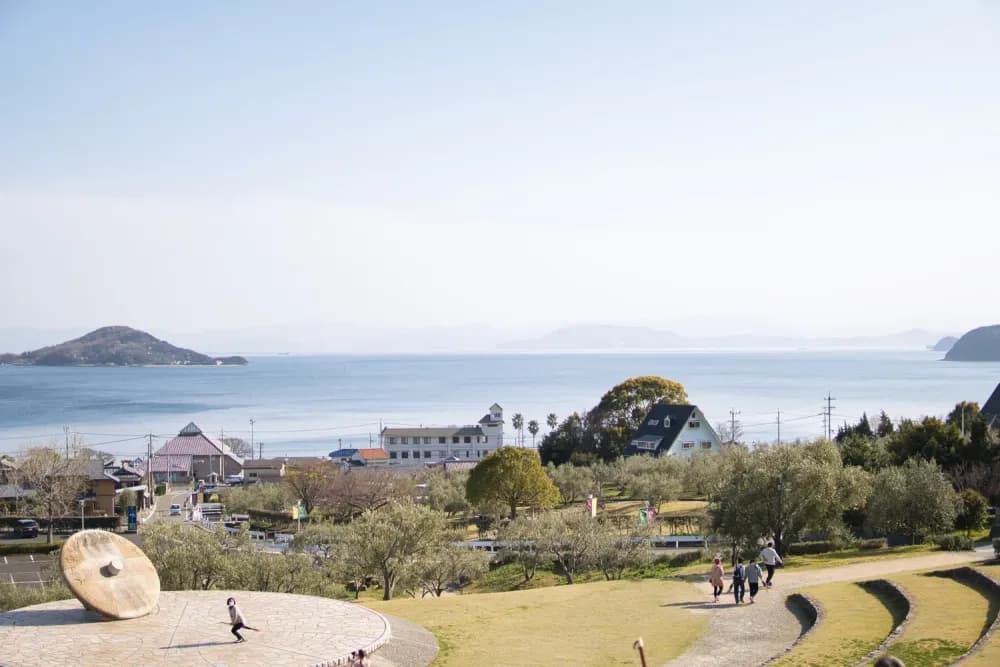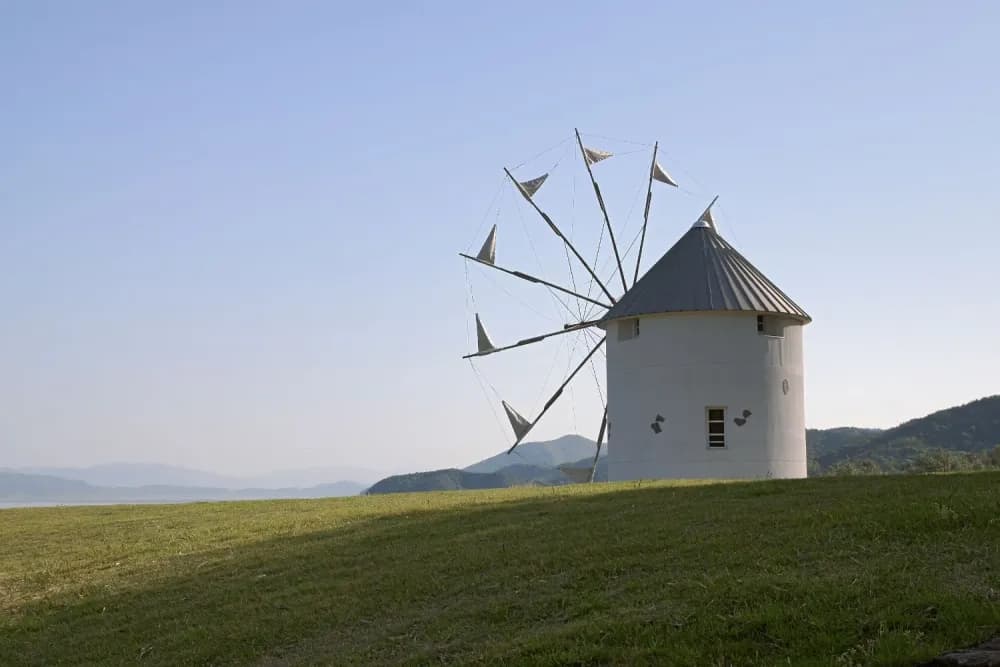Olives were first introduced to Japan in the early 1900s, and was first cultivated in Shodoshima (小豆島, Shōdoshima), which now accounts for over 90% of Japan's olive prodeuction.
Shodoshima Travel Guide
Island in the Seto Inland Sea famous for its Olives and Somen
An island located off the coast of Takamatsu (高松), this island can be easily accessed via ferry from Takamatsu (高松) or Okayama. The island is a great place to explore by cycling, or by renting a car.
Some locations like the Kankakei Gorge are located higher in altitude, while many others are located at the ports along the coastline.
Famous for its production of shoyu (醤油, Shōyu, Soy Sauce), olives, and somen (素麺, Sōmen), there are many factory tours, workshops, and other activities available for visitors here.
Nature
Culture
Gourmet
Volume
Local Specialties
オリーブ
Olive
素麺
Somen
Somen is commonly thought of as the fourth main noodle type in Japan, after ramen (ラーメン, Rāmen), udon (うどん), and soba (蕎麦, Buckwheat noodles). Unlike the other three though, somen is more commonly eaten at home, and rarely found in restaurants. It usually comes as long thin and smooth white strands of noodles that are usually eaten cold with men-tsuyu (麺つゆ).
醤油
Shoyu
Shoyu is arguably one of the most fundamental seasonings in Japanese cuisine. Used in cooking almost any sort of dish, or as a dipping sauce for foods such as sushi (寿司). Japanese Shoyu tends to be sweeter than Chinese soy sauce.
Popular Destinations
Shodoshima is also commonly called “Olive Island” by the locals, as the island’s mediterranean-like climate made it suitable for olive cultivation. First successfully cultivated in 1908, Shodoshima is the birthplace of olive cultivation in Japan, and is one of the island’s major produces alongside shoyu (醤油, Shōyu, Soy Sauce).
+ See More
Shoyu (醤油, Shōyu, Soy Sauce) is one of the most fundamental and important condiments in Japanese cooking. Yet, only 1% of today’s shoyu that is sold in Japan still uses the traditional natural brewing wooden barrel method (天然醸造木桶仕組み, lit. Tennen Jouzou Kioke Shikumi) method. Most shoyu manufacturers today use either plastic or steel barrels with chemical components to age and brew their soy sauce, a process that is much faster than the traditional method. This barrel-aging technique can take up to 4 years to produce a single bottle, and of the 1% of barrel-aged soy sauce, almost 90% is produced right here at Yamaroku Shoyu in Shodoshima.
+ See More
When people think of Japanese noodles, the big three often come to mind: ramen (ラーメン, Rāmen), udon (うどん), and soba (蕎麦, Buckwheat noodles). However, there’s actually a fourth that Japanese consume quite often at home, and is less commonly found on restaurant menus: somen (素麺, Sōmen). The texture is perhaps most similar to udon, a white noodle with a smooth surface, but unlike udon, somen has an extremely thin, almost thread-like, shape and is commonly consumed cold with a dipping sauce.
+ See More
Morikuni is the only sake brewery on Shodoshima, established in 2005, they revived local sake production 35 years after the last sake brewery on the island closed down. Their establishment today has three parts: a Gallery & Shop, a Cafe & Bar, and a Bakery.
+ See More
Itineraries
Getting Around
Most tourist attractions in Shodoshima can be grouped into three areas:
- Tonosho Port (土庄港, Tonosho-minato): Primary point of entry for the island, where the ferries from Takamatsu (高松) and Kobe (神戸, Kōbe) dock at.
- Shodoshima Town (小豆島町, Shōdōshima-machi): Where many of the shops, restaurants, and the shoyu (醤油, Shōyu, Soy Sauce) breweries are located
- Inland areas: Higher altitude areas where Kankakei Gorge and Nakayama Rice Terrace are located.
There are three main modes of transportation on Shodoshima, each with their own benefits and drawbacks:
- Bus: The main form of public transport, with a wide network across the island, but relatively low frequency.
- Rental Bikes: A great way to explore the island and take in the views, and the electric-assist bikes are suitable for a ride between Tonosho and Shodoshima Town. However, it is difficult to reach the inland areas by rental bikes.
- Rental Car: Probably the most convenient way to get around the island, and is recommended if you have a license.
Getting There
© 2023 Ki Creative. All Rights Reserved.
Due to changing circumstances, readers are advised to do their own additional research. All information on this site is purely for reference only.
Privacy







